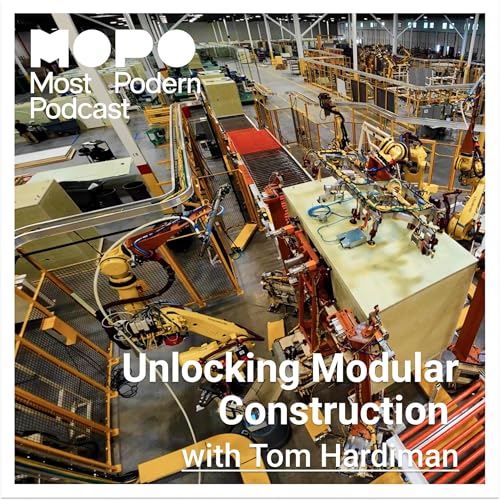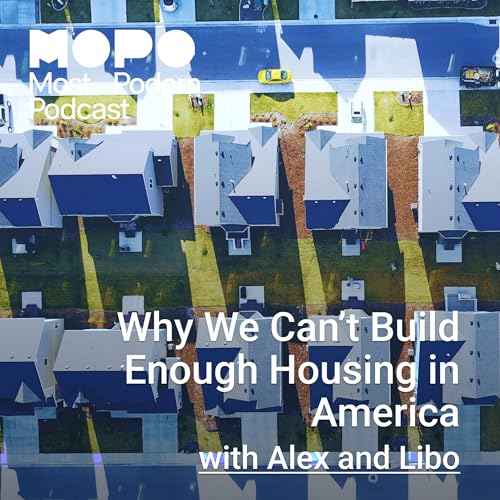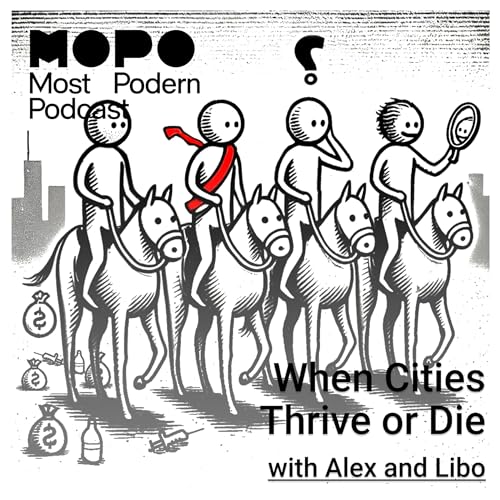How do we build faster, smarter, and more affordably in a world running out of patience and running short on skilled labor? Tom Hardiman, Executive Director of the Modular Building Institute, joins Alex Yuen and Libo Li to explain how modular construction can reshape the built environment. From cutting construction timelines in half to reducing waste and expanding access to housing, Tom shows why modular is not a trend but a practical tool for a more sustainable, efficient, and inclusive future. The conversation unpacks the realities behind factory based building, the politics that slow adoption, and how modular can help cities facing affordability and capacity challenges.
Subscribe to Most Podern on:
Spotify - https://open.spotify.com/show/3zYvX2lRZOpHcZW41WGVrpApple Podcasts - https://podcasts.apple.com/us/podcast/most-podern-podcast/id1725756164Youtube - https://www.youtube.com/@MostPodernInstagram - https://www.instagram.com/most.podernLinkedIn - https://www.linkedin.com/company/most-podern
Keywords
modular construction, prefab housing, offsite construction, Modular Building Institute, MBI, Tom Hardiman, affordable housing solutions, housing crisis, construction technology, manufacturing in construction, sustainable building, prefabricated buildings, industrialized construction, factory-built homes, housing innovation, construction efficiency, future of construction, how to build faster, Most Podern podcast
Chapters
00:00 Introduction to Modular Construction
00:53 Defining Modular Construction
02:02 Benefits of Modular Construction
04:59 The Ecosystem of Modular Construction
06:51 Coordination in Modular Projects
08:20 Cost Considerations in Modular Construction
09:53 The Importance of Time in Construction
11:30 Architects and Modular Construction
12:53 Successful Modular Projects
14:38 Addressing Design Concerns in Modular Construction
17:32 Standardization vs. Customization
19:45 Regulatory Challenges in Modular Construction
20:50 Education and Resources for Modular Construction
21:13 The Role of Education in Modular Construction
24:27 Attracting Young Talent to Modular Construction
28:32 Barriers to Adoption of Modular Construction
30:56 Navigating Politics and Labor Relations
34:51 Integrating Traditional and Modular Construction
37:52 The Future of Modular Construction
40:12 Upcoming Events and Community Engagement
Links
Tom Hardimanlinkedin.com/in/tomhardiman
Modular Building Institute (MBI)
https://www.modular.org/
World of Modular Conference
https://www.modular.org/wom/
MBI Research and Resources
https://www.modular.org/resources/
 32 分
32 分 2025/12/1042 分
2025/12/1042 分 2025/12/0335 分
2025/12/0335 分 46 分
46 分 2025/11/1126 分
2025/11/1126 分 39 分
39 分 2025/09/2441 分
2025/09/2441 分 2025/09/1731 分
2025/09/1731 分
